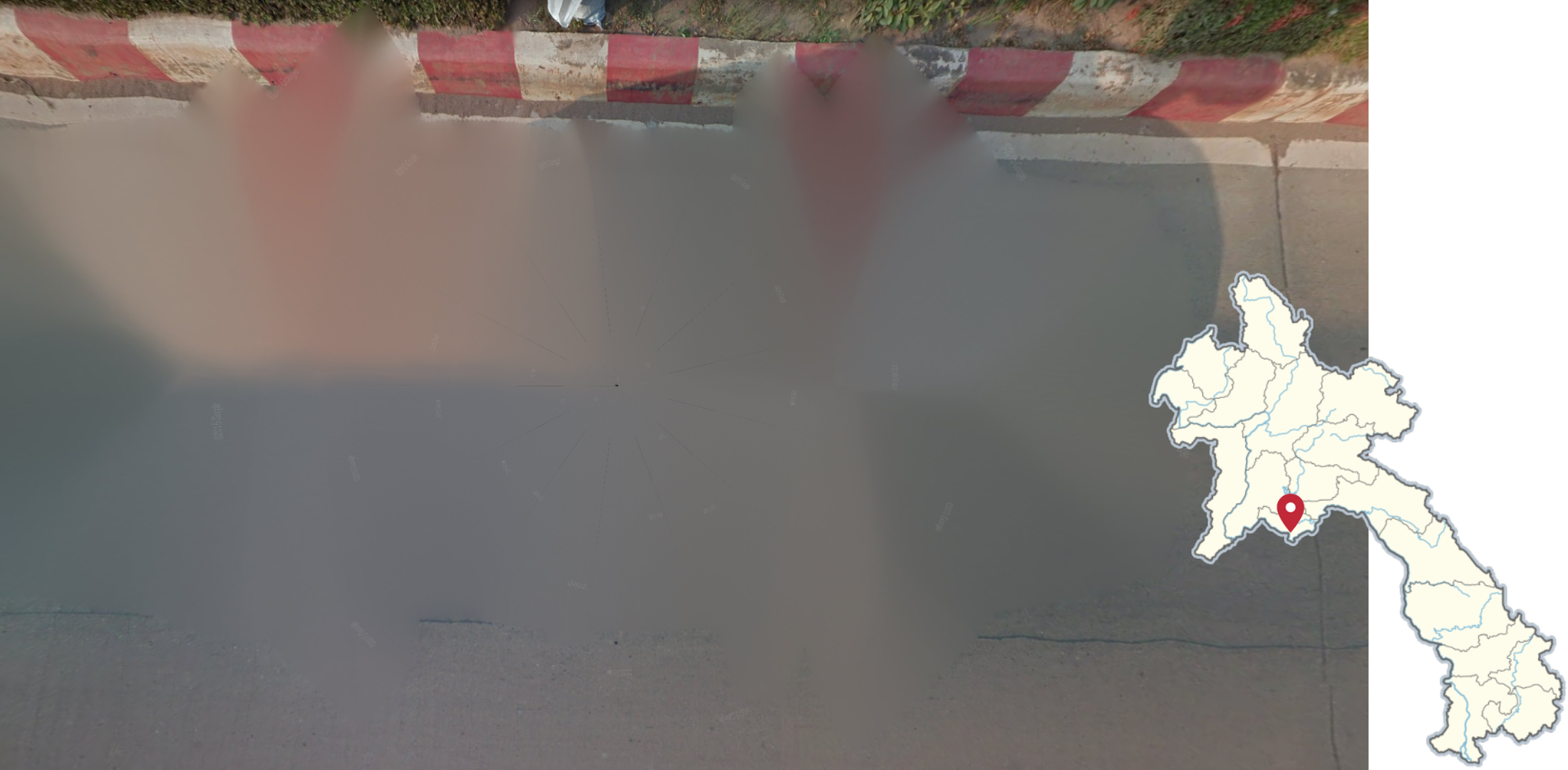
Laos
Street View coverage in Laos is very limited. Only five cities are covered: Vientiane, Vang Vieng, Luang Prabang, Savannakhet, and Pakse.
In addition, all coverage in Laos was taken by a Generation 3 camera.
All five cities have a distinct look and with some practise they are easily distinguishable from each other. The differences are discussed in more detail in the region-guessing section, but the summarized version is as follows:
Luang Prabang: historical architecture, hills, palms
Vang Vieng: distinct mountains
Vientiane: no roof rack, large city
Savannakhet: very flat
Pakse: red soil, arid, hills
You can practice telling the difference between the 5 cities with this map.
Luang Prabang
Luang Prabang is located on the Mekong River and surrounded by low mountains and hills (not always visible).
Luang Prabang is the former royal capital of Laos and a UNESCO heritage site. The city has a lot of historical architecture, including several temples. Many buildings make use of traditional dark wooden architectural elements. There are also some buildings dating back to French colonial rule of Laos.
Vang Vieng
This rugged mountain range can be seen from almost any point in Vang Vieng, and is the most reliable way of recognizing it.
NOTE: Vang Vieng has very limited coverage; by far the least out of all 5 Lao cities. The actual coverage is also south of the Vang Vieng label on the map.
Vientiane
As previously mentioned, the Vientiane area is the only part of Laos where the Google car is not visible. It also has a considerable amount of rural coverage, especially to its southeast.
NOTE: This may lead to toss-ups with Thailand and Cambodia. Use the driving side (Thailand being left, and Laos and Cambodia right), along with other clues to tell them apart.
The road that goes through the conservation area features uniquely hilly terrain for Laos. Landscape around the road is also very dry, and mostly forested. Additionally, the road is in good condition with coloured curbs and dashed outer lines.
NOTE: It is the only single lane road that has black and white or yellow and white curbs.
The only trekker in Laos is a view of the monumental Patuxai arch, a massive war memorial in the middle of Vientiane. Some of the coverage is made with a normal trekker, and some with a tripod.
Savannakhet
Savannakhet is very flat: the only mountains that are visible are on the other side of the Mekong river, in Thailand.
It is also recognizable as its soil has a slight red tinge, however not as red as Pakse.
NOTE: On Google Maps, the label for Savannakhet is hidden under the label of the Thai province of Mukdahan until you zoom in relatively close. You can find Savannakhet by going west of Xeno.
Pakse
The southern city of Pakse is easily recognizable thanks to the distinct red soil.
The vegetation is also uniquely dry, with equally dry hills nearby.




























